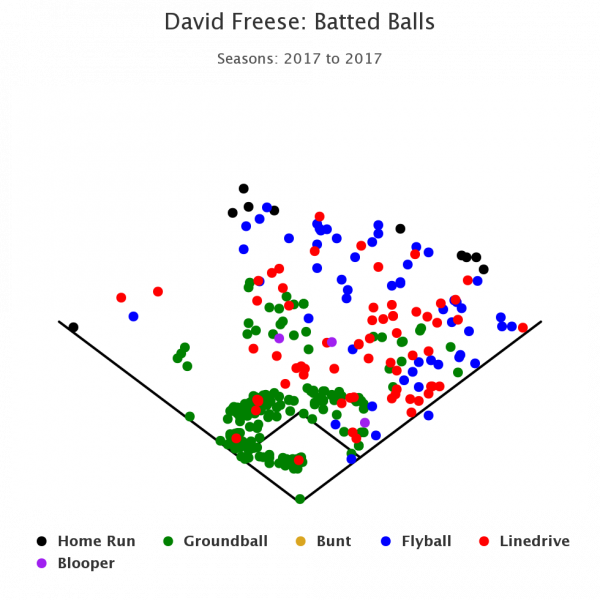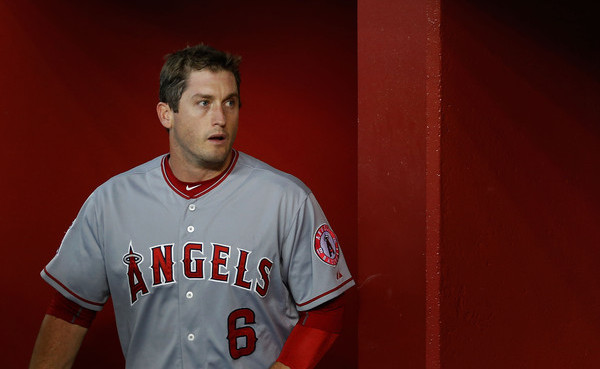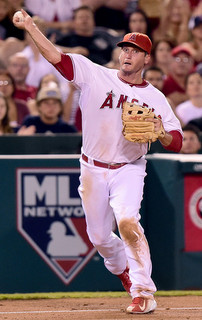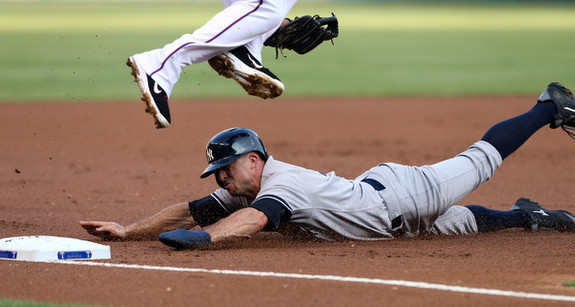
To date, the Yankees have made the single biggest move in baseball this offseason, acquiring reigning NL MVP Giancarlo Stanton from the Marlins in what amounts to a salary dump. Starlin Castro is a decent enough player and Jorge Guzman is a very good prospect, but yeah, if you’re the Yankees (or any contending team), that’s a trade you make eight days a week and twice on Sundays.
Over the last few days the Pirates have taken over as the center of attention by trading away staff ace Gerrit Cole and face of the franchise Andrew McCutchen. Cole went to the Astros over the weekend and yesterday the Pirates sent McCutchen to the Giants for two prospects. Those trades have no direct impact on the Yankees aside from potentially facing Cole and/or McCutchen down the line.
Those trades do, however, have indirect impact on the Yankees. On every team, really. The trades change the entire offseason market to some degree, and that will affect the still open to doing stuff Yankees. Each of the three branches to these trades — the Pirates branch, the Giants branch, and the Astros branch — means something different to the Yankees.
The Pirates are open for business
There’s no doubt about it now. Cole is gone, McCutchen is gone, and I have to think it’s only a matter of time until Josh Harrison is gone as well. Others like David Freese, Felipe Rivero, Daniel Hudson, and Ivan Nova could be on the chopping block too. If you’re going to trade Cole and McCutchen, you might as well listen to offers for everyone else on your roster. It only makes sense.
Even with Cole in Houston, the Pirates still have some players who could help the Yankees, namely Harrison (here’s our Scouting The Market post) and Freese (Scouting The Market). Picking up Rivero would be fun too, but the Yankees aren’t desperate for bullpen help, and I don’t see them moving significant prospects for a reliever, even one as good as Rivero. Harrison, who the Yankees have been connected to for weeks, and Freese are more likely targets.
The Pirates are clearly open for business and willing to trade, and, best of all, they didn’t knock it out of the park with either the Cole or McCutchen trade. Both deals are more quantity over quality. This is nothing new either. Pirates GM Neal Huntington has been trading his best players for eyebrow-raising packages since the days of Nate McLouth and Jason Bay. The Yankees might be able to get Harrison and/or Freese at a price that won’t hurt at all.
The Giants still need an outfielder (and more)

A few weeks ago in a mailbag I noted the Giants had the worst projected outfield in baseball for 2018. McCutchen is no longer the MVP caliber producer he was in his prime, but he’ll be a massive upgrade over guys like Gorkys Hernandez, Mac Williamson, and Jarrett Parker. Between McCutchen and Evan Longoria, the Giants made huge upgrades at two major problem positions.
And yet, because their outfield was so bad, the Giants still need another outfielder after acquiring McCutchen. Alex Pavlovic notes San Francisco was planning to play McCutchen in a corner — where he fits best at this point of his career — and add a quality defensive center fielder. (Their outfield defense was sooo bad last year.) Signing Lorenzo Cain would be the sexy move. Signing Jarrod Dyson would be the practical move.
The Yankees have outfielders to spare, so if the Giants are still in the market for another outfielder, it’s possible the two could get together for a trade. Jacoby Ellsbury would be ideal. The Giants reportedly don’t have much more money to spend and they definitely don’t have many top prospects to trade, so take on a few million in salary and give up a non-prospect and boom, they’ll have a quality defensive center fielder in Ellsbury. Easy enough.
Of course, trading Ellsbury remains a long shot, both to the Giants or anywhere else. What about Brett Gardner though? If the Giants are more willing to take on money than reported, they could be a destination for Gardner as the Yankees try to free up payroll space to sign Yu Darvish. Or what about Aaron Hicks or Clint Frazier? I have no idea what the Giants could send the Yankees in return, but hey, if they need an outfielder, Hicks or Frazier could be targets.
Furthermore, the Giants have made it clear they are looking to improve and get back to contention this coming season — that might not be possible after going 64-98 in 2017, but they’re trying — so they figure to look for upgrades in areas other than the outfield. What about the bullpen? If the Yankees need to clear money for Darvish or whoever, Adam Warren or Dellin Betances (or David Robertson) could be of interest to the Giants.
I’ll admit to this being a stretch. With the Pirates, the fact they’re open for business is plainly obvious, as are the potential Harrison and/or Freese fits. With the Giants, we’re more or less hoping they still want an outfielder (or reliever), and the two clubs can find a way to match up for a trade. Looks tough on paper. Possible? Sure. But difficult. I just think the more active San Francisco is, the more likely it is they could strike a deal with the Yankees, even if it is a long shot.
The Astros are the team to beat
Did anyone out there truly believe otherwise prior to the Cole trade? I hope not. The Astros are the defending World Series champs, they lost no one of consequence to free agency this offseason, and their core is (mostly) young and under control long-term. They’re the team to beat. Their roster says they are and they’ve earned every right to be considered the AL favorites going into the 2018.
Now the Astros have added Cole, a potential frontline starter, to a roster that was already good enough to have a legitimate shot at repeating in 2018. The Yankees are better today than they were in the ALCS because adding Stanton more than offsets the losses of Castro and Chase Headley (and Todd Frazier), but they’re still looking up at the Astros. Want to win the 2018 World Series? You’re probably going to have to go through Houston.
These days Brian Cashman & Co. are pretty good at not making knee-jerk, reactionary type moves. The Astros getting Cole won’t coax the Yankees into blowing up the luxury tax plan and signing Darvish. It is a reminder that the Yankees are not the best team in the league, at least not on paper, and that the teams they’re chasing are getting better. There is always room for improvement. The defending champs just reminded the Yankees and everyone else of that with the Cole trade.







